Prerequisites:
| Node | OS | IP |
| k8s-master | CentOS7 | 192.168.137.161 |
| k8s-node1 | CentOS7 | 192.168.137.162 |
Now we have 2 working CentOS virtual machine, which can connect to each other, also able access to Internet. Let's do some configuration before we provision kubernetes cluster on them.
Install kubernetes:
- Disable firewall for both master and node by running below command
firewall-cmd --state # check firewall state systemctl stop firewalld.service # stop firewall systemctl disable firewalld.service # disable firewall to auto launch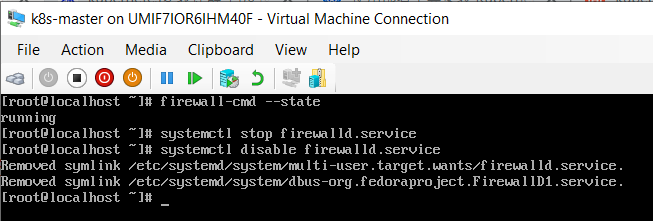
- Update iptables
Running below command to setting iptables for master only
cat <<EOF > /etc/sysctl.d/kubernetes.conf net.bridge.bridge-nf-call-ip6tables = 1 net.bridge.bridge-nf-call-iptables = 1 EOF sysctl --system
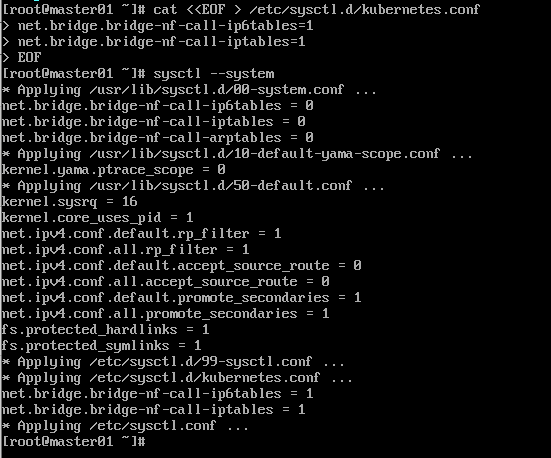
- Disable SELinux module for both master and node by running below command
getenforce # check SELinux status setenforce 0 # stop SELinux sed -i "s/SELINUX=.*/SELINUX=disable/g" /etc/selinux/config # disable SELinux module
shutdown -r now # Reboot system is required
- Update host name
Execute below command for master node:
more /etc/hostname # check current hostname hostnamectl set-hostname master01 # update hostname to master01

Perform the same command to update hostname of k8s-node1:
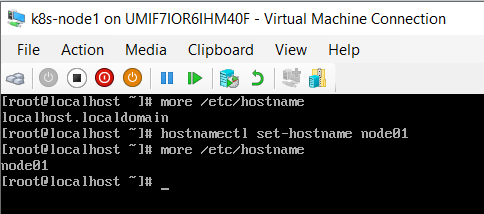
- Modify hosts file /etc/hosts on both node k8s-master and k8s-node1
Execute below command to append host details to the end of file /etc/hosts:
cat >> /etc/hosts << EOF 192.168.137.161 master01 192.168.137.162 node01
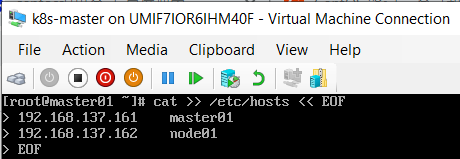
NOTE: Perform the same update for k8s-node1

- Disable swap
Run below commands swapoff -a on both k8s-master and k8s-node1:
sed -i '/swap/d' /etc/fstab
swapoff -a # switch of swap temporary free -m # check if swap turned off successful, the line swap should be showing 0
- Setting up yum resource for both nodes
Since some of external site been blocked, so we need to repoint yum source to domestic agent resource, running below command to setup:
cat <<EOF > /etc/yum.repos.d/kubernetes.repo [kubernetes] name=Kubernetes baseurl=https://mirrors.aliyun.com/kubernetes/yum/repos/kubernetes-el7-x86_64/ enabled=1 gpgcheck=1 repo_gpgcheck=1 gpgkey=https://mirrors.aliyun.com/kubernetes/yum/doc/yum-key.gpg https://mirrors.aliyun.com/kubernetes/yum/doc/rpm-package-key.gpg EOF
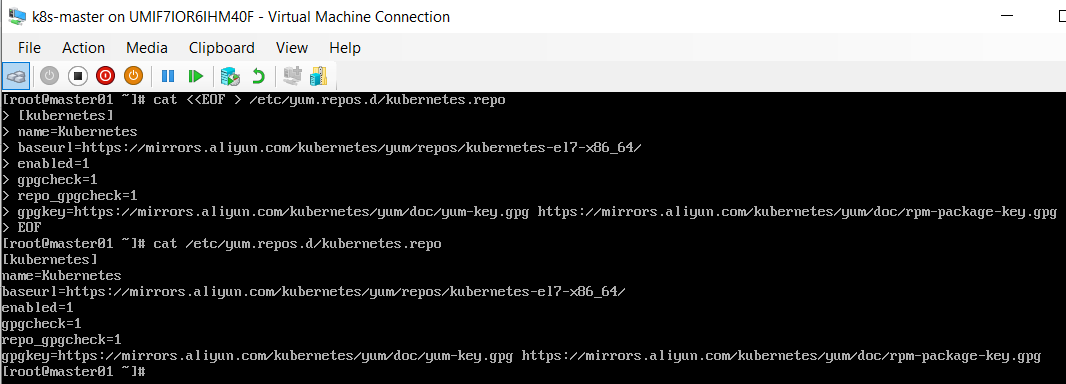
- Execute below commands on both nodes, refresh yum cache
yum clean all yum -y makecache

- All set for system configuration now. We are ready to provision container and Kubernetes !
Next let's get Docker installed from both master01 and node1.